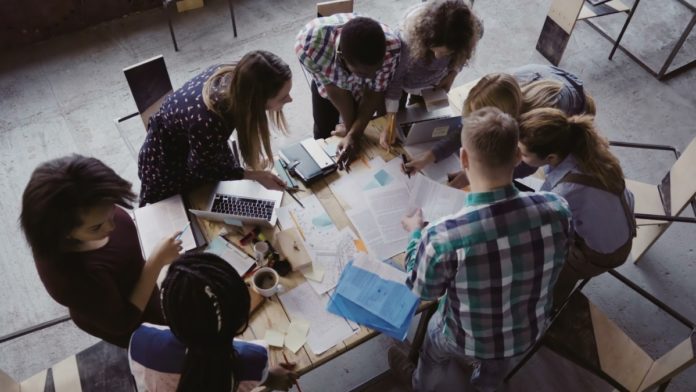
It’s an understatement to say Covid-19 has changed working life. Where I usually am flying across the globe to share ideas with other HR professionals, I now spend most of my day in the same 300 or so square feet of my home. And the impact on my work life is nothing compared to people working in food production, retail and grocery — let alone the transformation of medical and biochemical sciences into the nation’s first line of defense.
As a country, we’re desperate for life as we knew it to return. But to get ourselves and our people through this, we can learn from Vice Admiral James Stockdale’s experience as a Vietnam prisoner of war: We will need “to meld hope with realism” as we confront the difficult facts of life before us, while remembering that this crisis cannot last forever. Let’s examine three phases of life during and after the crisis and how they’ll shape the way we live and work.
"Melding hope with realism." Three phases of life during and after the pandemic – and how they'll shape the future of work. @UKGinc #HR #HRTech Share on XReaction

This is where we are today: Government measures seek to halt the spread of the novel coronavirus, and the ensuing chaos has forced organizations to focus on securing people and systems. Most have invested in building a new “business as usual” via Zoom, Slack and other remote work tools, all while digitizing HR. The scramble to go virtual highlights the absolute necessity of creativity and adaptability in times of uncertainty.
Creativity and adaptability, of course, come from your people. Organizations must demonstrate a fuller understanding of their employees’ lives outside of work by creatively supplementing traditional company and benefits offerings to ensure that their people and their families can absorb the new stressors of life in quarantine. Individuals’ relationships with their employer will be made or broken based on how they were treated, prioritized and communicated with in this phase of the crisis. Employees’ expectations of how much their organizations will provide for, care about and trust them will be critical in the aftermath of the pandemic.
Redefinition
Once we see a light at the end of the tunnel, we’ll need to devote our energy to understanding how “life as we know it” has changed and draw up plans for that new future. For some companies, this may take the form of rehiring talent, rethinking workforce plans or even redefining key skills and policies as subsequent waves of infection send employees back out of offices for “quarantine 2.0.”
Regardless of industry, HR digitization will be a must to even the most technologically resistant companies. This shift in process will push us to rethink the role HR plays in our organizations: How can we reassure employees we’re advocating for them if we can’t always be in the same room? What other ways can HR be easier for all employees to access? How will organizations deal with screen fatigue and other occupational and psychological hazards of remote work that this crisis has exposed and exacerbated?
Talent acquisition will also transform. HR departments will face a very different pool of candidates under very different circumstances with very different needs. In most cases, interviews will be remote. For existing employees, what’s the best way to give constructive career feedback in the aftermath of what could be months out of office? This is the perfect time to devise new performance assessments that take team and individual contributions into consideration.
Organizations will think less like capitalists and more like environmental scientists: How do we design, build and maintain ecosystems of mutually supportive companies that foster community through relationships, much like individuals do?
Reemergence
Covid-19 propels us further along the path to the much-awaited workplaces and workforces of the future. Increased employee voice and choice can drive engagement to new heights, but only if supported by thoughtful responses and recommendations based on sentiment analysis. New business, staffing and workplace models will be in place to reduce spending, reward flexibility and take into account new behaviors. We’ll need executive-level responsibility, perhaps a chief continuity officer, to lead preparations for future disruptions in business continuity.
To prevent the worst reactions to the pandemic from repeating in future (hopefully much smaller) crises, we’ll need to ensure adaptability and resilience are measured and fostered in our companies. Extreme and rigorous financial and workforce scenario modeling must become the norm. Resilience testing of people and teams will be required.
We will need to rethink the value of people’s work on a fundamental level: If minimum-wage workers are the most at risk, how can we shift compensation models to reflect their essential status?
Tailoring our responses to organizational needs and understanding the impact on our people in the three phases of crisis is crucial to success in the future of work — which is now. As disruptive and overwhelming as this acceleration into the future is, one into which we had previously only taken baby steps, we can never forget to take care of and connect with each other in the most human of ways: people first.
Cecile Alper-Leroux is vice president of HCM Innovation at UKG. An economic anthropologist, she’s the author of From Dissonance to Resonance, Bringing Your People and Organization into Sync. UKG is a sponsor of the HCM Technology Report. To learn more, click here. This article originally appeared in Forbes.
Image: iStock














